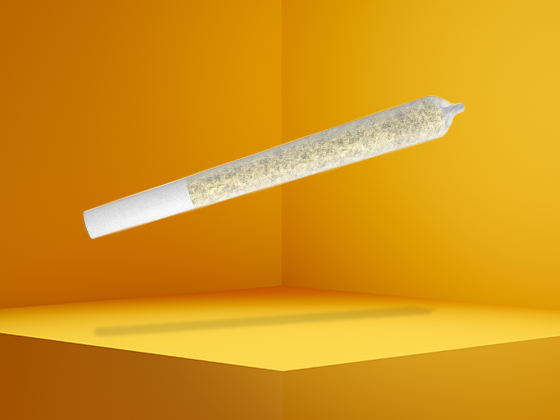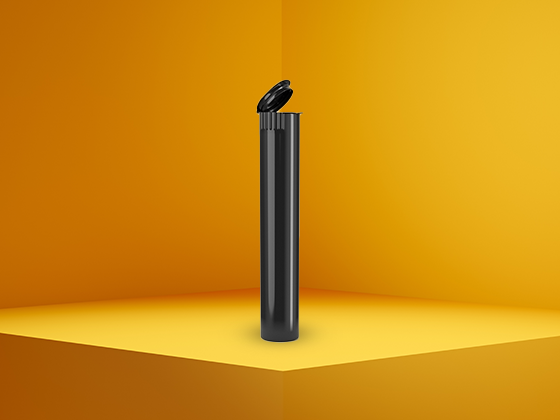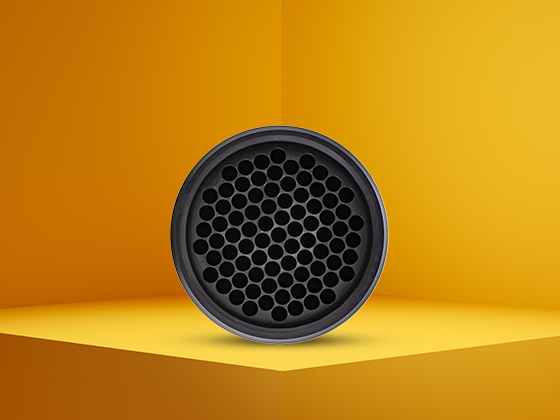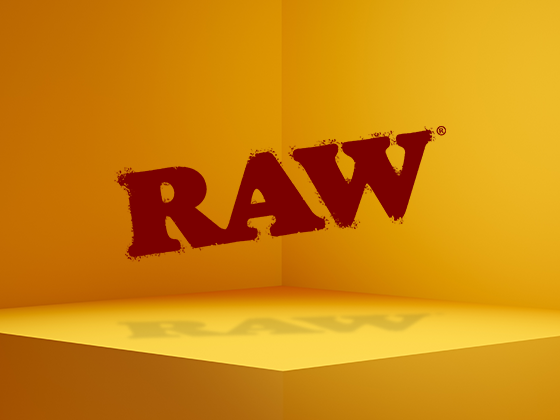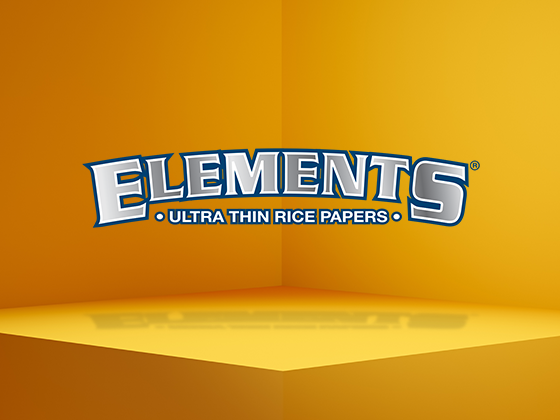Resources
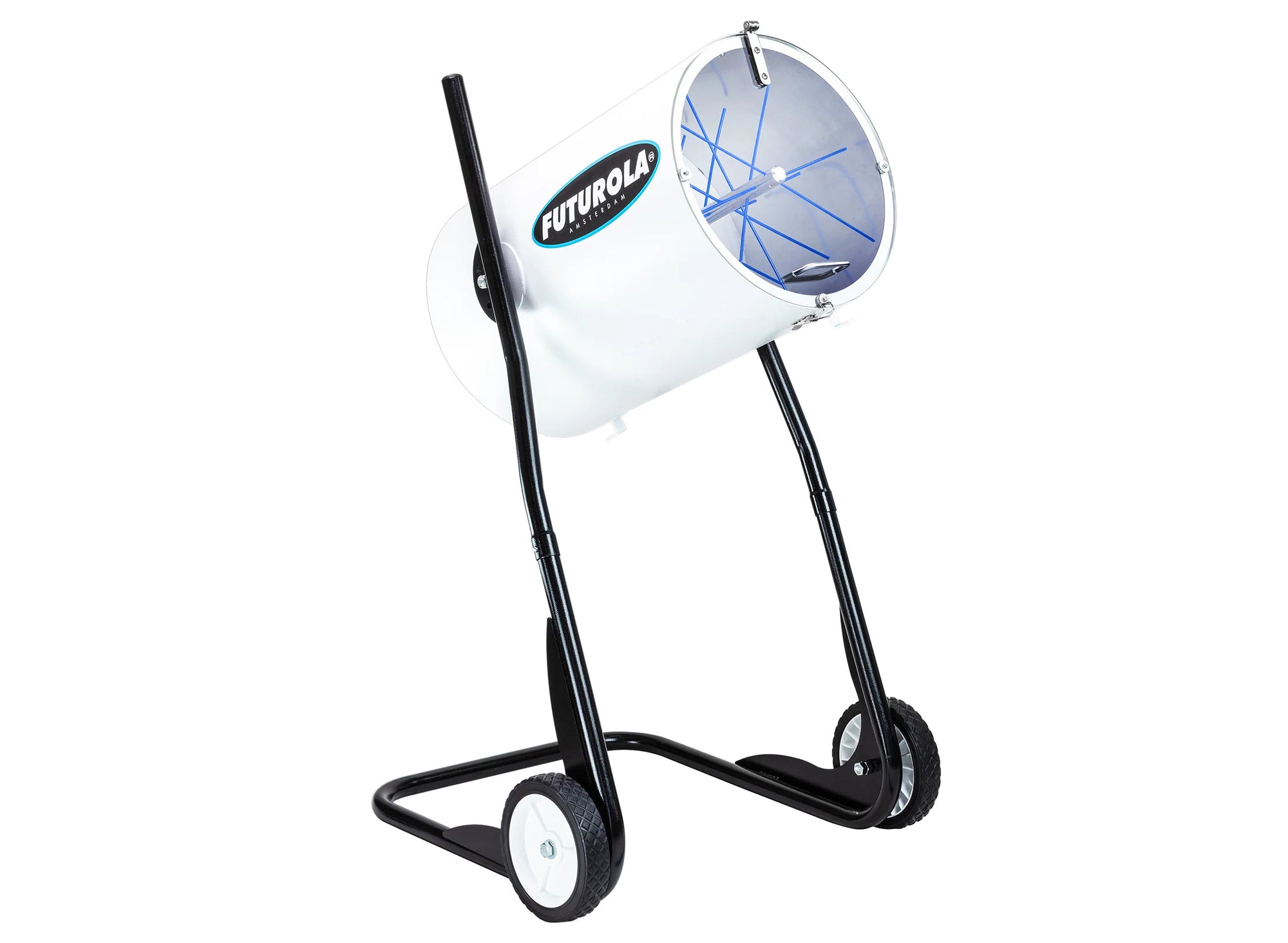
business tips
Exploring the Futurola Shredder and Mini Shredder: A Comprehensive Guide
Table of Contents
Introduction to Futurola Shredders
Futurola Shredder: Features and Specifications
Futurola Mini Shredder: Compact Efficiency
Comparing Futurola Shredders: Standard vs. Mini
Optimal Use and Maintenance Tips
The Futurola Ecosystem: Complementary Products
Innovation and Future Developments in Herb Preparation
nnExploring the Futurola Shredder and Mini Shredder: A Comprehensive GuidennThe Futurola shredder and its compact counterpart, the Futurola mini shredder, have revolutionized herb preparation for both personal and commercial use. These Dutch-engineered devices offer precision, consistency, and efficiency that manual grinding simply cannot match. Whether you're preparing material for pre-rolls or looking to achieve a consistent grind for other consumption methods, understanding the capabilities of these innovative tools is essential.nnIntroduction to Futurola ShreddersnnFuturola has established itself as a pioneer in smoking accessories, with its shredders standing as flagship products in the company's lineup. The brand's commitment to quality craftsmanship is evident in the durable construction and reliable performance of their shredding devices. As explored in our guide to Futurola's innovative accessories, these tools represent the intersection of Dutch engineering precision and practical functionality.nnThe primary purpose of these shredders is to create uniformly processed herb material, which is particularly valuable for businesses producing pre-rolls or consumers who appreciate consistency in their smoking experience. Unlike traditional grinders that can produce inconsistent results, Futurola shredders offer mechanical precision that ensures each batch meets the same standards.nnFuturola Shredder: Features and SpecificationsnnDesign and ConstructionnnThe standard Futurola shredder features a robust aluminum construction, designed for durability and longevity. Its dimensions make it suitable for commercial operations while remaining manageable for dedicated enthusiasts. The device incorporates a drawer system that collects the processed material, minimizing waste and simplifying the collection process.nnCapacity and PerformancennWith the ability to process significant quantities in minutes, the standard shredder excels in high-volume scenarios. The mechanical action ensures consistent particle size, which is crucial for even burning in pre-rolled products. This consistency directly contributes to the quality of the final product, whether used with Futurola blunt cones or other rolling options.nnThe standard Futurola shredder can process up to 5 pounds of material per hour, making it ideal for commercial pre-roll production.nnFuturola Mini Shredder: Compact EfficiencynnThe Futurola mini shredder maintains the quality standards of its larger counterpart while offering a more compact form factor. This scaled-down version is perfect for personal use or smaller operations where space efficiency is a priority.nnPortability and StoragennThe mini shredder's reduced footprint makes it significantly more portable than the standard model. It can be easily stored when not in use, making it practical for environments where dedicated workspace is limited. Many users pair their mini shredder with quality rolling trays from our collection to create an organized preparation station that contains all materials neatly.nnEfficiency for Personal UsennDespite its smaller size, the mini shredder doesn't compromise on the quality of the grind. It produces the same consistent results as the standard model, just in quantities more appropriate for individual or small-batch preparation. This makes it an excellent companion for users of Futurola pre-rolled and rolling machines.nnComparing Futurola Shredders: Standard vs. Mininnn
Capacity: Standard shredder handles larger volumes, ideal for commercial use; mini shredder is perfect for personal quantitiesn
Footprint: Standard model requires dedicated space; mini version is compact and storage-friendlyn
Price Point: Mini shredder offers a more accessible entry point for individual consumersn
Grind Consistency: Both models produce equally consistent results, differing primarily in volume capacityn
Maintenance Requirements: Similar cleaning procedures, though the standard model may require more frequent maintenance with heavy usennnOptimal Use and Maintenance TipsnnGetting the Most from Your ShreddernnTo achieve optimal results with either Futurola shredder model, proper material preparation is essential. Starting with appropriately dried herb material will prevent clogging and ensure smooth operation. Additionally, avoiding overloading the chamber helps maintain consistent grind quality and reduces strain on the mechanical components.nnCleaning and MaintenancennRegular cleaning is crucial for maintaining performance. Both shredder models benefit from periodic disassembly and thorough cleaning to remove residue that can affect operation. The manufacturer recommends using isopropyl alcohol and dedicated brushes to clean hard-to-reach areas, ensuring all moving parts remain free of buildup.nnThe Futurola Ecosystem: Complementary ProductsnnFuturola shredders are designed to work seamlessly with the brand's other products, creating an integrated preparation system. The processed material from either shredder model feeds perfectly into Futurola's rolling machines and cone fillers, as detailed in our overview of the Futurola Dutch Crown device.nnFor those looking to complete their setup, Futurola cones are specifically designed to work with material processed through the brand's shredders, ensuring optimal filling density and burn characteristics. This system approach demonstrates Futurola's comprehensive understanding of the preparation process.nnInnovation and Future Developments in Herb PreparationnnThe Futurola shredder line represents the current state of the art in mechanical herb preparation, but the industry continues to evolve. Emerging technologies suggest future developments may include even more precise particle size control, integrated moisture sensors, and potentially automated systems that combine shredding with filling operations.nnFor businesses and enthusiasts who value efficiency and consistency, staying informed about these innovations is worthwhile. The fundamental principles that make Futurola shredders effective today, however, will likely remain relevant regardless of technological advances, as the core need for uniform material preparation remains constant in quality smoking experiences.nnWhether you choose the standard Futurola shredder for high-volume operations or the Futurola mini shredder for personal use, these tools represent a significant upgrade from manual alternatives. Their precision engineering and thoughtful design reflect Futurola's understanding of both commercial and consumer needs in the evolving landscape of smoking accessories.
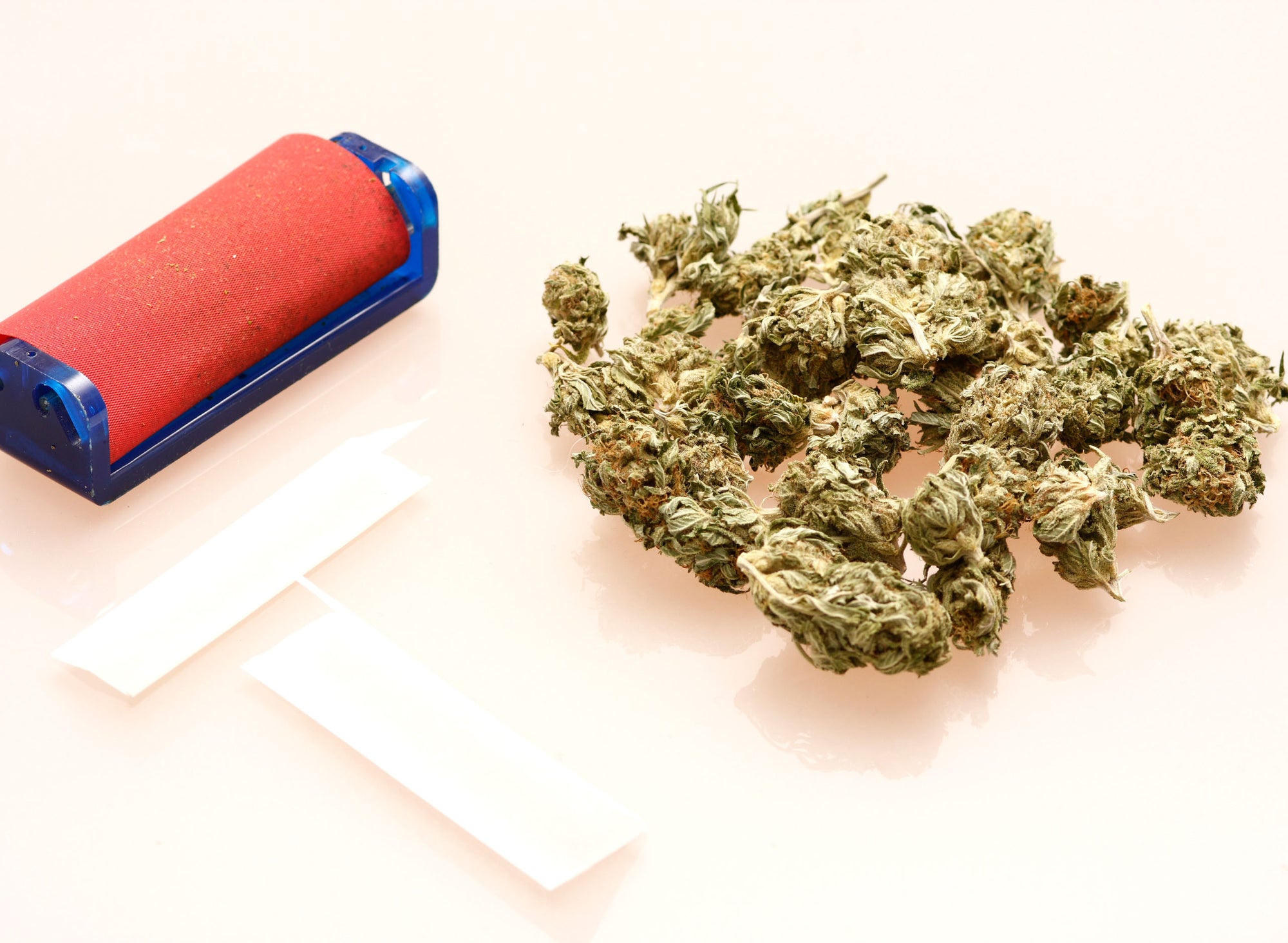
flower
The Ultimate Guide to RAW Automatic Joint Rollers
Table of Contents
Introduction to RAW Automatic Joint Rollers
Benefits of Using a RAW Joint Roller Machine
Types and Sizes of RAW Joint Rollers
How to Use a RAW Automatic Joint Roller
Expert Tips for Perfect Rolls
Complementary Accessories for Your RAW Roller
Alternatives to RAW Automatic Joint Rollers
Innovations and Future Developments in Rolling Technology
nnThe Ultimate Guide to RAW Automatic Joint RollersnnRAW automatic joint rollers have revolutionized the rolling experience for both novices and experienced enthusiasts. These ingenious devices simplify the often challenging process of hand-rolling, creating consistent, well-packed joints in a fraction of the time. Whether you're dealing with dexterity issues or simply want to streamline your routine, a RAW joint roller machine offers precision and convenience.nnIn this comprehensive guide, we'll explore everything you need to know about RAW auto joint rollers, from basic operation to advanced techniques that will elevate your rolling game.nnBenefits of Using a RAW Joint Roller MachinennThe popularity of RAW automatic joint rollers stems from several key advantages they offer over traditional hand-rolling methods:nnn
Consistency: Each joint comes out uniform in size and densityn
Speed: Significantly reduces rolling time, especially for beginnersn
Ease of use: Minimal learning curve compared to hand-rollingn
Reduced waste: Less spillage means more efficient use of materialsn
Accessibility: Makes rolling possible for those with limited dexteritynnnAs noted in this comprehensive guide on RAW rolling techniques, automatic rollers provide a level of consistency that's difficult to achieve by hand, especially for those new to rolling.nnTypes and Sizes of RAW Joint RollersnnStandard SizesnnRAW joint rollers come in various sizes to accommodate different preferences:nnn
70mm: Perfect for personal, smaller jointsn
79mm: The most popular size, ideal for standard jointsn
110mm: Designed for longer sessions or group settingsn
King Size: Creates larger diameter rolls for enhanced experiencesnnnAccording to this guide on RAW roller sizes, the 79mm is the most versatile option for most users, while the 110mm offers additional capacity for those who prefer longer rolls.nnMechanical VariationsnnBeyond size differences, RAW automatic joint rollers feature different mechanical designs:nnn
Basic roller: Two-piece plastic construction with apronn
Bamboo roller: Eco-friendly alternative with natural materialsn
Hemp plastic roller: Sustainable option with similar functionalityn
Adjustable rollers: Allow for customization of joint thicknessnnnHighlight: While exploring different rolling options, many enthusiasts are also discovering our collection of premium pre-rolled cones that offer convenience without sacrificing quality or the ritual experience.nnHow to Use a RAW Automatic Joint RollernnUsing a RAW joint roller machine is straightforward once you understand the basic process:nnStep-by-Step GuidennnOpen the roller by pulling apart the two rolling barsnPlace a rolling paper between the bars with the adhesive strip facing up and toward younAdd your ground material evenly across the length of the papernClose the roller by bringing the bars togethernRoll forward (away from you) several times to pack the materialnInsert the tip of the adhesive just over the rear rollernContinue rolling forward until the paper is completely rollednLick the exposed adhesive and finish rolling to sealnOpen the roller and remove your perfectly rolled jointnnnThis detailed step-by-step guide offers additional insights for mastering the technique with visual references.nnExpert Tips for Perfect RollsnnEven with an automatic joint roller RAW, certain techniques can improve your results:nnn
Grind consistency: Aim for a medium grind, not too fine or too coarsen
Even distribution: Spread material uniformly across the rollern
Gentle pressure: Don't overpack, as this can restrict airflown
Multiple rolls: Roll the mechanism several times before sealingn
Practice the seal: The trickiest part is getting a tight, even sealnnnAs you become more comfortable with your RAW auto joint roller, you'll develop a feel for the right amount of material and pressure needed for your perfect roll.nnComplementary Accessories for Your RAW RollernnTo enhance your rolling experience with a RAW joint roller machine, consider these complementary products:nnn
RAW filter tips: Pre-cut or perforated cardboard for creating crutchesn
RAW papers: Available in various sizes to match your rollern
Grinders: For achieving the ideal consistencyn
Storage containers: To keep your roller and supplies organizedn
Rolling trays: Prevents waste and keeps your workspace cleannnnThis comprehensive guide to RAW accessories provides further details on building your complete kit.nnAlternatives to RAW Automatic Joint RollersnnWhile RAW joint rollers are popular, several alternatives exist:nnn
Pre-rolled cones: Eliminate rolling altogethern
Cone filling machines: Designed specifically for pre-rolled conesn
Electric rollers: Motorized options for even greater conveniencen
Blunt rollers: Specialized for rolling blunts rather than jointsnnnInnovations and Future Developments in Rolling TechnologynnThe world of joint rolling continues to evolve with new innovations emerging regularly. RAW has maintained its position at the forefront by continuously refining their automatic joint roller designs and materials. Recent developments include more sustainable manufacturing processes, improved durability, and enhanced user experience features.nnAs cannabis markets mature worldwide, we anticipate seeing more specialized rolling tools designed for specific needs and preferences. The focus on sustainability is also driving innovation, with more eco-friendly materials being incorporated into both rollers and the papers they use.nnWhether you're new to rolling or looking to upgrade your current setup, RAW automatic joint rollers offer a reliable, consistent solution that has stood the test of time. By understanding the different options available and mastering proper technique, you'll be creating perfect rolls with minimal effort and maximum enjoyment.
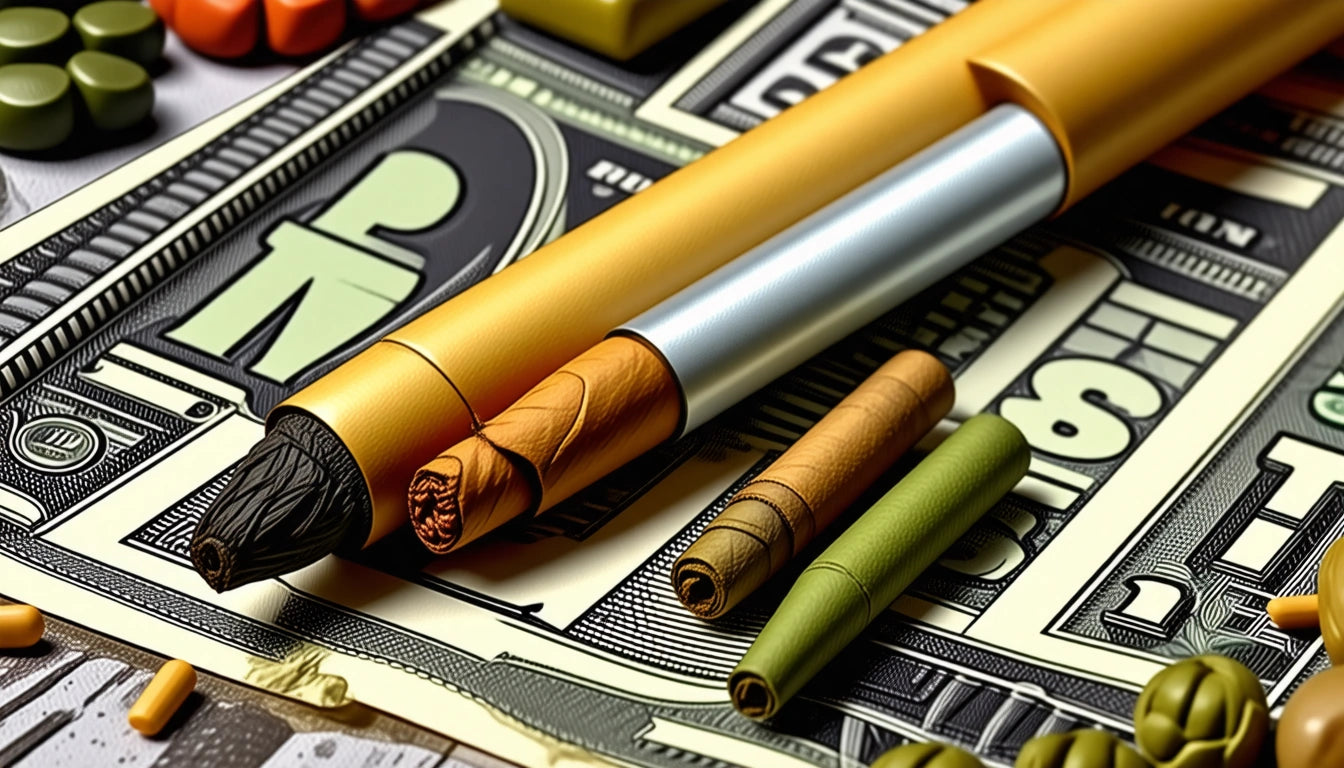
business tips
Cost of Pre-Rolled Blunts: What to Expect
Table of Contents
Average Price Range for Pre-Rolled Blunts
Factors Affecting the Cost of Pre-Rolled Blunts
Pre-Roll Blunt Pricing by Location
Quality Considerations When Purchasing Pre-Rolls
Cost vs. Value: Are Premium Pre-Rolled Blunts Worth It?
Market Trends and Future Pricing Expectations
Pre-rolled blunts have become increasingly popular among cannabis consumers seeking convenience and consistency. Understanding how much pre-roll blunts cost can help buyers make informed decisions and get the best value. This guide explores the typical pricing structures, influencing factors, and what to expect when purchasing pre-rolled blunts across different markets.Average Price Range for Pre-Rolled BluntsThe cost of pre-rolled blunts varies significantly based on several factors, but consumers can generally expect to pay between $10-$30 for a single pre-roll blunt. Basic options typically start around $10-$15, while premium or infused varieties can reach $25-$30 or more.According to market research on pre-rolled joint pricing, blunts often command a slightly higher price point than standard joints due to their larger size and the additional materials involved in their production.Typical Price Points by Type
Basic pre-rolled blunts: $10-$15
Mid-tier blunts (higher quality flower): $15-$20
Premium blunts (top-shelf flower): $20-$25
Infused blunts (with concentrates or kief): $25-$35+
Factors Affecting the Cost of Pre-Rolled BluntsSeveral key factors influence how much you'll pay for a pre-rolled blunt:Flower QualityThe quality of cannabis used is the primary cost driver. Top-shelf flower with higher THC content and superior terpene profiles will result in more expensive pre-rolls. Budget options often use trim or lower-grade flower, which reduces the cost but may affect the experience.Weight and SizePre-rolled blunts typically contain more cannabis than standard joints. While a typical joint might contain 0.5-1 gram, blunts often hold 1-2 grams or more. Understanding pre-roll weights helps explain why blunts generally cost more than standard pre-rolled joints.Additional IngredientsInfused pre-rolled blunts that contain concentrates, kief, or other enhancers command premium prices. These additions increase potency and often improve the overall experience, justifying the higher cost for many consumers.To maintain freshness and quality of these products, many producers use specialized humidity control solutions during storage and transportation, which can add slightly to the final retail price but ensures the product reaches consumers in optimal condition.Highlight: Infused pre-rolled blunts containing concentrates or kief typically cost 30-50% more than standard varieties but offer significantly enhanced potency and effects.Pre-Roll Blunt Pricing by LocationGeographical location significantly impacts how much pre-roll blunts cost:Legal State MarketsIn mature legal markets like California, Colorado, and Oregon, competition has helped stabilize prices. Consumers in these states can often find quality pre-rolled blunts for $12-$20, with premium options ranging from $20-$30.Emerging MarketsNewer legal markets typically have higher prices due to limited competition and supply chain constraints. Consumers in these regions might pay $15-$25 for standard pre-rolled blunts and $30+ for premium options.Urban vs. Rural PricingUrban dispensaries in competitive areas often offer lower prices than rural locations. The difference can be as much as 10-20% for comparable products due to competition and higher sales volumes in city locations.Quality Considerations When Purchasing Pre-RollsResearch on pre-roll blunts indicates that quality varies significantly across price points. When evaluating the cost of pre-rolled blunts, consider these quality factors:Wrapper MaterialHigher-quality blunt wraps, such as those made from hemp or tobacco leaf, tend to burn more evenly and provide a better experience than cheaper alternatives. Premium wraps can add $2-$5 to the final cost.Fill QualityBudget pre-rolls sometimes contain shake, trim, or lower-quality flower. Premium options use whole flower, often from specific strains selected for their effects and flavor profiles.Rolling TechniqueWell-rolled blunts burn evenly and provide a consistent experience. Machine-rolled products offer consistency, while hand-rolled premium blunts may command higher prices for their craftsmanship.Cost vs. Value: Are Premium Pre-Rolled Blunts Worth It?When considering how much to spend on pre-roll blunts, the value proposition becomes important:Convenience FactorPre-rolled blunts offer significant convenience compared to purchasing flower, wraps, and rolling supplies separately. For occasional users or those who don't want to invest in equipment, the premium may be justified.Experience LevelFor novice users, pre-rolls provide a standardized experience without the learning curve of rolling. This consistency can be worth the additional cost for those new to cannabis consumption.Special OccasionsPremium infused blunts priced at $25+ may offer better value for special occasions rather than regular consumption. Many consumers reserve these higher-priced options for celebrations or social gatherings.Market Trends and Future Pricing ExpectationsThe pre-rolled segment continues to evolve, with several trends affecting pricing:As markets mature and production scales up, prices typically decrease. However, premiumization is simultaneously occurring, with craft and artisanal pre-rolled blunts commanding higher prices for their quality, unique strains, and specialized production methods.Consumers can expect the entry-level price point for basic pre-rolled blunts to stabilize around $10-$12 in mature markets, while the premium segment will likely continue to expand with innovative products justifying higher price points of $25-$40.As competition increases, brands will focus more on quality and consistency to differentiate their products, potentially leading to better value across all price points for consumers wondering how much pre-roll blunts should cost.

flower
Comparing RAW Rolling Papers: Black, Organic, and Classic Varieties
Table of Contents
Understanding RAW Rolling Papers
RAW Black vs RAW Regular: Key Differences
RAW Organic vs Classic: Natural Alternatives
Performance Comparison: Burn Rate, Taste, and Experience
Choosing the Right RAW Papers for Your Needs
Comparing RAW Rolling Papers: Black, Organic, and Classic VarietiesRAW rolling papers have become a staple in the smoking community, known for their natural approach and distinctive brown appearance. With several varieties now available, including RAW Black, RAW Organic, and RAW Classic, consumers often wonder which option best suits their preferences. This comprehensive comparison explores the differences between these popular rolling paper varieties, helping you make an informed choice for your smoking experience.Understanding RAW Rolling PapersRAW papers are produced by HBI International and have gained popularity for their unrefined, natural approach to rolling papers. The brand emphasizes sustainability and purity, using unbleached fibers and avoiding additives like chalk, burn accelerants, and dyes that are common in many competing papers.According to our comprehensive guide on RAW rolling papers, the company offers several distinct product lines, each with unique characteristics that cater to different preferences and smoking styles.The RAW Family of ProductsThe main varieties in the RAW lineup include:
RAW Classic - The original unrefined papers made from a blend of unbleached plant fibers
RAW Black - Ultra-thin premium papers designed for connoisseurs
RAW Organic Hemp - Made from organically grown hemp with no chemicals used in processing
Each product maintains the core RAW philosophy while offering distinct smoking experiences. As noted in our exploration of RAW brand products, authenticity is a key concern, as the popularity of these papers has led to counterfeits in the market.RAW Black vs RAW Regular: Key DifferencesWhen comparing RAW Black vs RAW regular papers, the most notable difference is thickness. RAW Black papers are significantly thinner than the Classic variety, offering what many consider a more refined smoking experience.Thickness and MaterialRAW Black papers are the thinnest option in the RAW lineup, measuring approximately 20 gsm (grams per square meter). In contrast, RAW Classic papers are around 12.5 gsm. This difference in thickness affects several aspects of the smoking experience:
RAW Black papers are less noticeable during smoking, allowing more focus on the material inside
The ultra-thin design of RAW Black creates less paper ash
Classic papers provide slightly more structural support, making them easier for beginners to roll
As detailed in our analysis of RAW Black papers, these premium papers use specialized watermarks and a unique hybrid blend of unbleached plant fibers to achieve their ultra-thin profile without sacrificing strength.Highlight: RAW Black papers are approximately 40% thinner than RAW Classic papers, offering a more refined smoking experience with less paper taste and ash.RAW Organic vs Classic: Natural AlternativesThe distinction between RAW Organic and RAW Classic centers primarily on the source material and production methods rather than physical characteristics like thickness.Source MaterialsRAW Organic papers are made exclusively from organically grown hemp, cultivated without pesticides or chemicals. This appeals to environmentally conscious consumers seeking the purest possible smoking experience. RAW Classic papers, while still natural and unrefined, use a proprietary blend of unbleached plant fibers that may include flax, hemp, and other natural materials.For those particularly concerned with sustainability, our selection of premium pre-rolled cones includes eco-friendly options that complement the RAW philosophy of natural smoking products.Processing MethodsBoth varieties avoid chlorine bleaching and chemical additives, but RAW Organic papers adhere to stricter standards throughout their production process. The organic certification ensures that no synthetic fertilizers or pesticides are used in growing the hemp, and processing follows organic guidelines.This distinction matters particularly to purists and those with sensitivities to certain chemicals or additives. According to information from our exploration of RAW's company practices, this commitment to organic principles extends throughout their supply chain.Performance Comparison: Burn Rate, Taste, and ExperienceWhen evaluating RAW Black vs RAW organic vs classic varieties, several performance factors come into play:Burn Rate and EvennessRAW Black papers tend to burn slightly slower than both Classic and Organic varieties due to their density and specialized material blend. This slower burn is often preferred by connoisseurs looking to savor their smoking experience.RAW Classic and Organic papers have similar burn rates, though some users report that Organic papers burn marginally more evenly. All RAW papers use the brand's patented crisscross watermark system (called "RAW Watermark") that helps prevent runs and creates a more even burn.Taste ProfileThe taste difference between varieties is subtle but noticeable to experienced users:
RAW Black offers the least paper taste, allowing for the purest flavor of the smoking material
RAW Organic provides a very clean taste with minimal paper influence
RAW Classic has a slight natural paper taste that some users actually prefer for its authenticity
These differences become more apparent when smoking milder materials where paper flavor can be more noticeable.Rolling ExperienceThe rolling experience varies significantly between varieties:
RAW Black papers are the most challenging to roll due to their extreme thinness
RAW Classic papers offer a middle ground of flexibility and strength
RAW Organic papers have a texture and pliability similar to Classic but with slightly more grip
For those who struggle with rolling or prefer convenience, pre-rolled cones and gift sets are available in all three varieties.Choosing the Right RAW Papers for Your NeedsWhen deciding between RAW Black vs RAW regular or organic varieties, consider these factors to match your personal preferences:Experience LevelBeginners might find RAW Classic papers easier to work with due to their balance of pliability and strength. As rolling skills improve, many users graduate to RAW Black for a more refined experience.Flavor PrioritiesIf experiencing the pure flavor of your smoking material is paramount, RAW Black offers the least paper interference. For those concerned primarily with organic growing practices, RAW Organic provides peace of mind with minimal taste impact.Frequency of UseRegular smokers often appreciate the investment in RAW Black papers for daily use, while occasional smokers might find RAW Classic papers more cost-effective and versatile.For the most authentic experience, be sure to verify you're purchasing genuine products through authorized retailers that carry verified RAW products.Ultimately, many enthusiasts keep multiple varieties on hand for different occasions and materials, appreciating the subtle differences each brings to the smoking experience. Whether you choose RAW Black, Organic, or Classic, you're selecting a product made with attention to natural materials and thoughtful design.
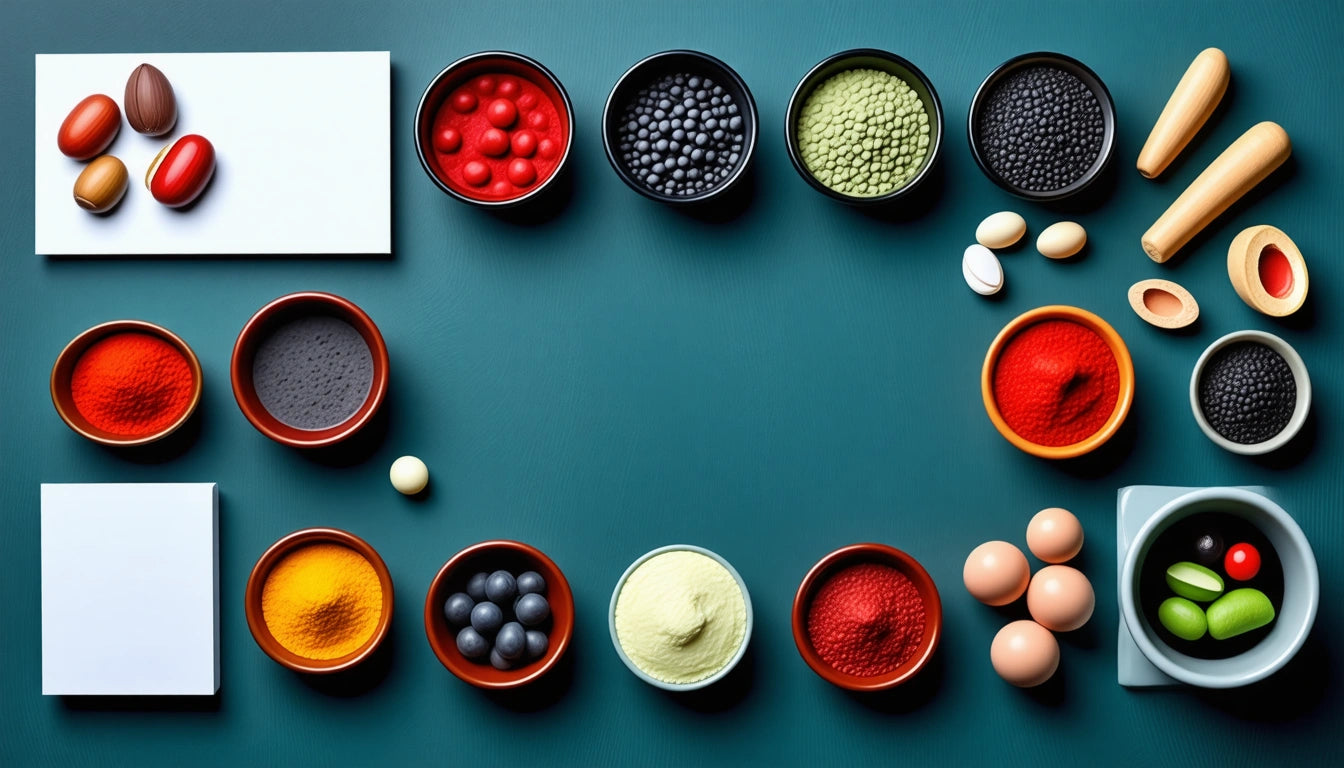
edibles
Comparing Edibles to Joints: Understanding Dosage Equivalence
Table of Contents
Fundamental Differences Between Edibles and Joints
THC Content Comparison: Joints vs. Edibles
Dosage Equivalence: How Much Edible Equals a Joint
Consumption Considerations: Duration and Effects
Practical Guidelines for Dosage Conversion
Personalized Dosage Recommendations and Best Practices
Cannabis consumers often wonder about equivalence between different consumption methods, particularly when transitioning between smoking and edibles. Questions like "how much edible is equivalent to a joint" or "50mg edible is how many joints" are common among both new and experienced users. This guide explores the complex relationship between these consumption methods and provides practical conversion insights.Fundamental Differences Between Edibles and JointsJoints and edibles differ fundamentally in how THC enters the bloodstream. When smoking a joint, THC is absorbed through the lungs and reaches the brain within minutes. With edibles, THC is metabolized by the liver, converting it to 11-hydroxy-THC, which is more potent and longer-lasting than standard THC.This metabolic difference creates challenges when attempting direct comparisons. A typical joint contains 0.3 to 1 gram of cannabis, but the bioavailability (amount absorbed) differs significantly between consumption methods.THC Content Comparison: Joints vs. EdiblesTHC in JointsTo understand equivalence, we must first establish how much THC is in a typical joint. Research indicates that an average joint contains approximately:
0.5 grams of cannabis
15-20% THC content in modern strains
Therefore, about 75-100mg of total THC
However, when smoked, only about 20-30% of this THC enters the bloodstream due to combustion loss and exhalation, resulting in approximately 15-30mg of bioavailable THC.THC in EdiblesEdibles list their THC content directly on packaging, typically ranging from 5mg to 100mg per serving. The liver's conversion process makes edible THC significantly more potent, with some research suggesting it's 4-5 times stronger than inhaled THC.Highlight: The liver converts edible THC into 11-hydroxy-THC, which crosses the blood-brain barrier more effectively than smoked THC, creating stronger and longer-lasting effects.Dosage Equivalence: How Much Edible Equals a JointDue to differences in metabolism and bioavailability, a direct milligram-to-milligram comparison isn't accurate. However, as a general guideline:
A 5-10mg edible roughly produces effects similar to a standard joint for most users
A 50mg edible would be approximately equivalent to 5-6 joints in terms of psychoactive effect
For microdosing, 2.5mg of edible THC might compare to a few puffs of a joint
Manufacturers producing both pre-rolls and edibles often use specialized filling equipment for precise dosage control across different product formats, which helps maintain consistency but doesn't eliminate the fundamental differences in how these products affect users.Consumption Considerations: Duration and EffectsOnset and Duration DifferencesWhen comparing edibles to joints, timing is a crucial factor:
Joints: Effects begin within minutes, peak at 30-60 minutes, and typically last 1-3 hours
Edibles: Onset takes 30-90 minutes, peaks at 2-4 hours, and effects can last 6-8 hours or longer
This extended duration explains why equivalent THC amounts between the two formats produce such different experiences.Effect IntensityThe subjective experience also differs significantly:
Joints typically provide more immediate head-high effects with greater user control
Edibles often create a more intense body high that can be overwhelming if improperly dosed
The edible experience is more unpredictable due to variables like metabolism and recent food consumption
Practical Guidelines for Dosage ConversionFor those transitioning between consumption methods, these guidelines can help determine how much edible equals a joint:For Occasional UsersIf you smoke occasionally:
Start with 5mg edible (equivalent to approximately half a joint)
Wait at least 2 hours before considering additional consumption
Remember that consumption patterns affect tolerance and required dosage
For Regular UsersIf you regularly consume joints:
10-15mg edible may provide effects similar to a full joint
Consider your typical consumption volume when calculating equivalence
If you typically consume multiple joints per session, you might require 20-30mg edibles
Personalized Dosage Recommendations and Best PracticesFinding your ideal dosage equivalence requires personal experimentation and careful consideration of several factors:
Start low and go slow: Begin with lower doses than you think you need
Keep a consumption journal: Track your experiences with different amounts
Consider your consumption goals: Medicinal users may need different amounts than recreational users
Account for tolerance: Regular cannabis users typically require higher doses
Be mindful of setting: Environment affects experience with both consumption methods
Understanding that joint measurements and potency vary widely is essential when making these comparisons. The standard "one joint equals X milligrams of edibles" formula will always be approximate rather than exact.By approaching dosage equivalence with knowledge about bioavailability, metabolism, and personal factors, consumers can make more informed decisions when switching between these popular consumption methods.
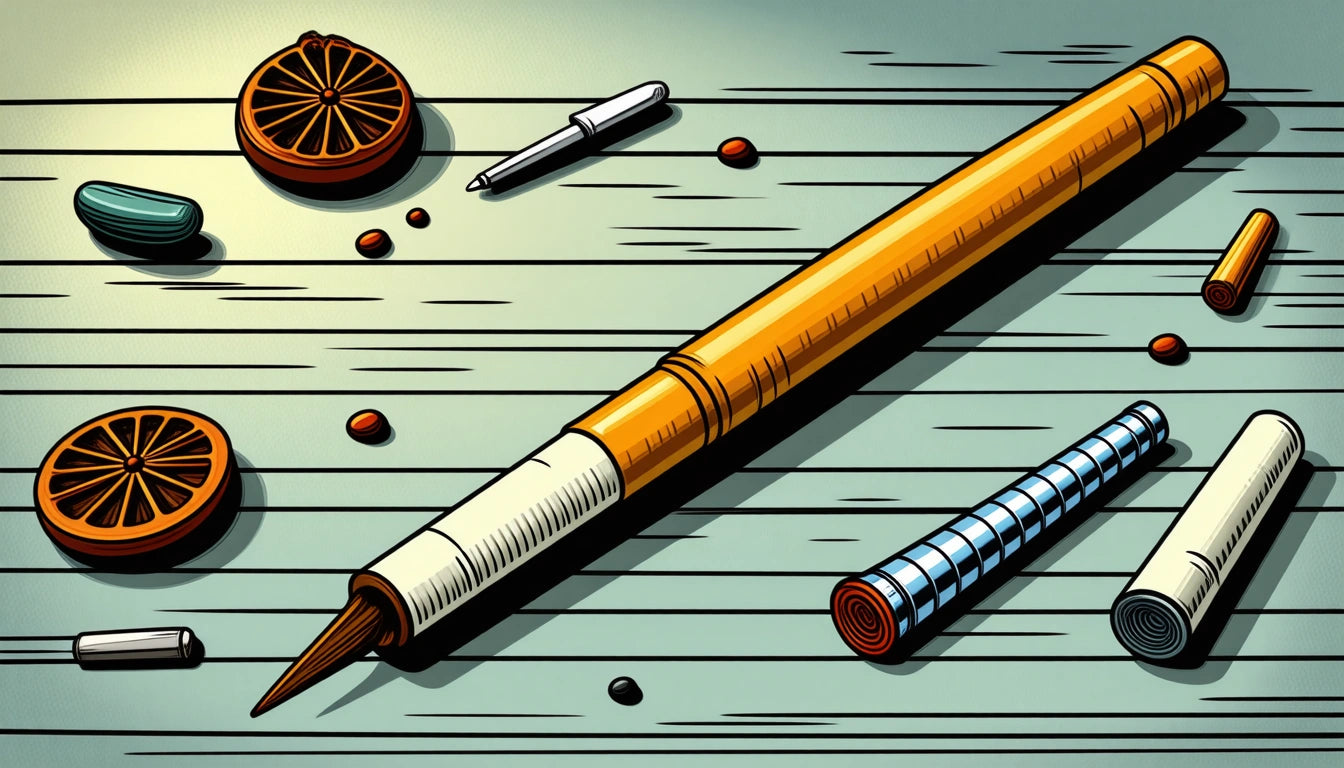
flower
Mastering the Art of Rolling and Using Cone Spliffs
Table of Contents
Understanding Cones: Types and Materials
Manual Rolling: How to Roll a Cone from Scratch
Using Pre-Roll Cones: A Step-by-Step Guide
Packing Techniques for the Perfect Cone
Common Mistakes When Rolling Cones
Essential Accessories for Cone Rolling
Advanced Techniques for Cone Enthusiasts
Cone spliffs have become increasingly popular among cannabis enthusiasts for their ease of use, consistent burn, and impressive appearance. Whether you're learning how to roll a cone from scratch or how to use pre-roll cones effectively, mastering this skill takes practice and proper technique. This comprehensive guide covers everything you need to know about rolling, filling, and enjoying the perfect cone spliff.Understanding Cones: Types and MaterialsBefore diving into rolling techniques, it's important to understand what makes a quality cone. Cones come in various sizes and materials, each offering different smoking experiences.Paper MaterialsThe most common materials for cones include:
Hemp papers: Natural option with minimal impact on flavor
Rice papers: Thin and slow-burning for a cleaner taste
Flax papers: Durable with moderate burn rate
Specialty papers: Including flavored options and transparent cellulose
According to this guide on pre-rolled cones and accessories, the material you choose significantly impacts burn rate, flavor, and overall experience.Manual Rolling: How to Roll a Cone from ScratchLearning how to roll a cone by hand is a fundamental skill for any cannabis enthusiast. The process requires patience and practice but offers complete control over your smoking experience.Step-by-Step Rolling Process
Prepare your rolling paper with the gum side up and facing you
Create a filter tip using cardstock or purchase pre-made tips
Place the filter at one end of the paper
Distribute your ground material along the paper, using more toward the end opposite the filter
Pinch the paper between your fingers and roll back and forth to shape the material
Tuck the non-adhesive side of the paper around the filter and material
Roll upward, licking the gum strip to seal
Twist the excess paper at the wider end to secure the contents
For more detailed instructions on crafting paper cones, check out this step-by-step guide to crafting paper cones.Highlight: The key to rolling a perfect cone is distributing your material with less near the filter and more toward the opposite end, creating the classic cone shape naturally during the rolling process.Using Pre-Roll Cones: A Step-by-Step GuideFor those who find manual rolling challenging, pre-rolled cones offer a convenient alternative. Learning how to use cones to roll effectively can save time while still providing a quality experience.Filling Pre-Roll Cones
Hold the cone upright with the open end facing up
Use a funnel or card to guide ground material into the cone
Fill in small amounts, gently tapping the cone to settle material
Use a packing tool to press material down without making it too tight
Continue until the cone is filled to your desired level
Twist the excess paper at the top to seal
For a comprehensive breakdown of this process, this guide on mastering the art of using and filling cones provides valuable insights.Packing Techniques for the Perfect ConeWhether using pre-rolled cones or rolling by hand, proper packing is crucial for an even burn and enjoyable experience.Achieving the Right DensityThe ideal pack is neither too tight nor too loose. A cone that's packed too tightly will restrict airflow, making it difficult to draw and potentially causing uneven burning. Conversely, a loosely packed cone may burn too quickly or unevenly.When storing your finished cones, proper containers are essential. Many enthusiasts use specialized jars with secure caps designed specifically for preserving freshness and potency of your materials and finished rolls.Common Mistakes When Rolling ConesEven experienced rollers make mistakes. Here are some common pitfalls to avoid when learning how to roll a spliff cone:
Using too much or too little material
Packing too tightly, restricting airflow
Uneven distribution leading to canoe-ing (uneven burning)
Improper filter placement causing stability issues
Using papers that are too moist or too dry
According to this resource on properly using RAW cone tips, the filter is particularly important for stability and preventing material from falling out.Essential Accessories for Cone RollingThe right tools can significantly improve your cone rolling experience:
Grinders for consistent material texture
Cone fillers and packing tools
Filter tips or crutches
Rolling trays to prevent waste
Storage containers for finished cones
These accessories not only make the process easier but also help achieve more consistent results, especially when learning how to jolly rush cones for efficiency.Advanced Techniques for Cone EnthusiastsOnce you've mastered the basics of how to roll a cone, you can explore advanced techniques to enhance your experience:Multi-Chamber ConesCreate sections within your cone using additional filters or different materials for a varied experience throughout the smoke.Inside-Out RollingAlso known as backrolling, this technique uses less paper for a purer taste and slower burn by placing the adhesive side facing inward.Specialty ShapesBeyond the standard cone, experiment with tulip shapes, crosses, or other creative designs for special occasions.For those looking to fill multiple pre-rolled cones efficiently, this step-by-step guide to filling pre-rolled cones by hand offers valuable techniques that can be scaled up for larger quantities.Mastering how to roll and use cone spliffs is both an art and a science. With practice, patience, and the right materials, you'll be crafting perfect cones that provide a superior smoking experience. Whether you prefer the traditional hand-rolling method or the convenience of pre-rolled cones, the techniques outlined in this guide will help you achieve consistent, enjoyable results.
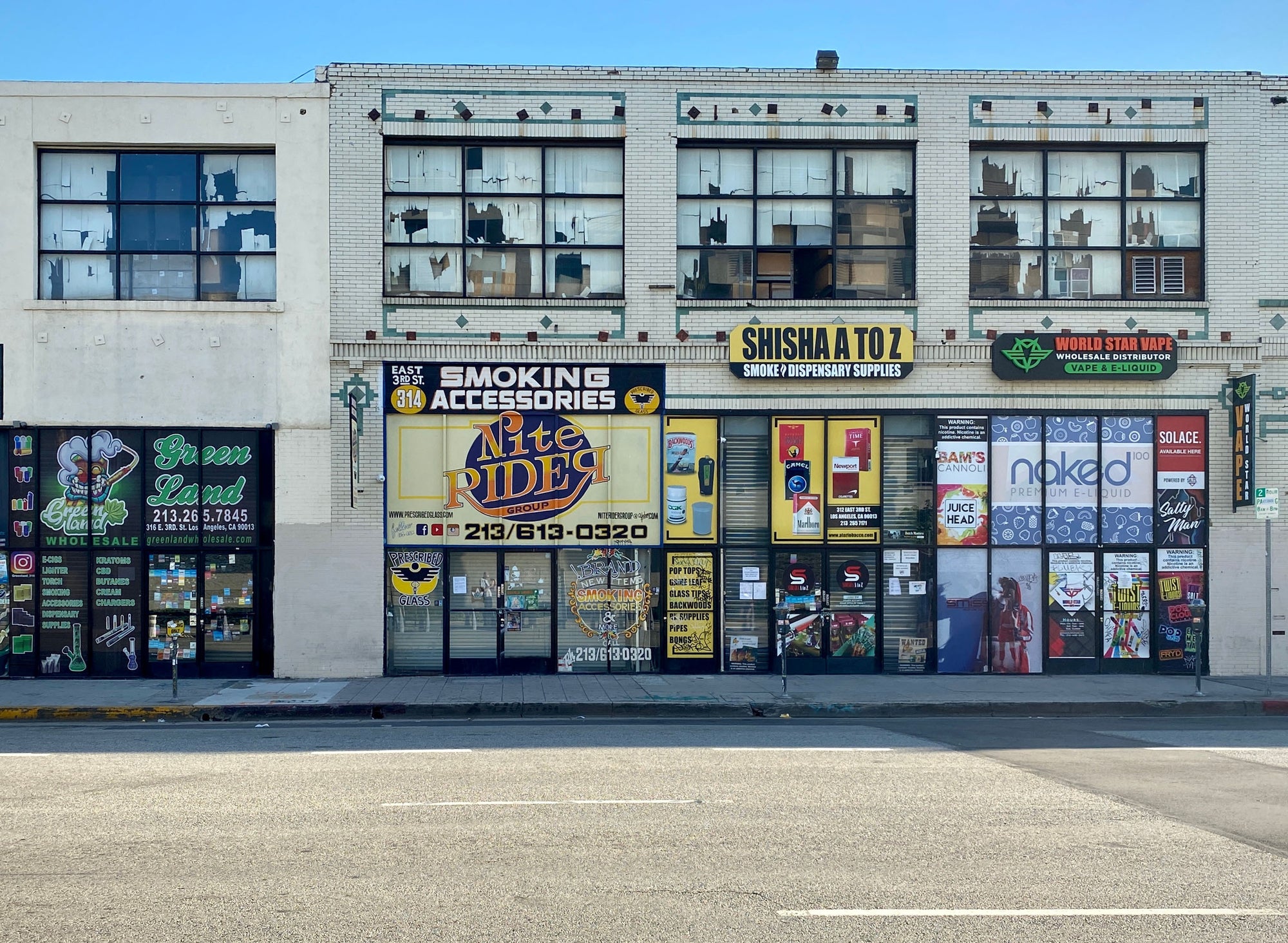
branding
Exploring RAW Shops and Stores: Your Ultimate Guide to Accessories and Wholesale Goods Nearby
Table of Contents
Understanding the RAW Brand and Product Authenticity
Finding RAW Shops and Stores Near You
Essential RAW Accessories Guide for Enthusiasts
RAW Wholesale Opportunities for Businesses
Online Shopping Options for RAW Products
The Future of RAW Shopping: Trends and Innovations
Exploring RAW Shops and Stores: Your Ultimate Guide to Accessories and Wholesale Goods NearbyFinding a quality RAW shop or store near you can be crucial for enthusiasts who value authentic rolling accessories. With the rising popularity of RAW products, more retailers are carrying these sought-after goods, from specialty smoke shops to convenience stores and online marketplaces. This guide will help you navigate the world of RAW shopping, whether you're looking for personal accessories or wholesale opportunities.Understanding the RAW Brand and Product AuthenticityBefore searching for a RAW store near me, it's important to understand what makes RAW products unique. RAW is known for their unrefined, unbleached papers made from natural plant fibers. The authenticity and variety of RAW brand products set them apart in the market.RAW's commitment to quality extends across their entire product line, which includes:
Rolling papers in various sizes
Pre-rolled cones
Rolling trays
Grinders and storage containers
Specialized accessories like rolling machines
Understanding the ownership and global presence of RAW can also help you appreciate the brand's values and quality standards. Exploring the company's structure reveals how they've maintained their commitment to natural products while expanding worldwide.Finding RAW Shops and Stores Near YouWhen searching for a RAW shop near me, several types of retailers typically carry these products:Specialty Smoke ShopsDedicated smoke shops often have the widest selection of RAW goods. These specialty stores frequently employ knowledgeable staff who can guide you through the various product options and accessories.Convenience Stores and Gas StationsMany convenience stores now carry basic RAW products like papers and pre-rolled cones. While the selection may be limited, these locations offer convenience for quick purchases.Head Shops and Cannabis Accessories RetailersThese stores specialize in smoking accessories and typically stock a comprehensive range of RAW products, from basic papers to collector's items and limited editions.When visiting any retailer, look for the official RAW displays and packaging to ensure you're getting authentic products. Counterfeit RAW goods have become common as the brand's popularity has increased.Highlight: Always check for authentication features on RAW packaging, including QR codes, holographic elements, and proper branding to ensure you're purchasing genuine products.Essential RAW Accessories Guide for EnthusiastsRAW accessories extend far beyond just rolling papers. Understanding the full ecosystem of products can enhance your experience and help you make informed purchases at any RAW store.Rolling Papers and ConesRAW offers various paper lines, including Classic, Organic Hemp, and Black series. Each provides a different experience in terms of thickness, burn rate, and flavor profile. Exploring the world of RAW rolling papers can help you choose the right option for your needs.For those who prefer pre-rolled options, we offer a variety of alternatives including premium OCB cones that complement the RAW experience with their own unique characteristics and quality standards.Rolling Trays and StorageRAW's iconic trays come in multiple sizes and designs, from pocket-sized options to large party trays. These accessories make the rolling process more organized and convenient.Specialized ToolsFrom rolling machines to specialized filters and tips, RAW offers tools designed to perfect the rolling experience. Many RAW shops also carry the brand's unique items like the RAW Hydrostone (natural humidifying stone) and RAW rolling mats.RAW Wholesale Opportunities for BusinessesFor retailers interested in RAW wholesale opportunities, several distribution channels exist. Becoming an authorized RAW retailer can be profitable given the brand's popularity and customer loyalty.Official DistributorsRAW works with authorized distributors who supply to retailers. Connecting with these official channels ensures you receive authentic products and potentially better pricing.Minimum Order RequirementsMost RAW wholesale agreements come with minimum order requirements. These vary by distributor but typically include a mix of popular products and newer releases.Businesses looking to stock RAW products should also explore RAW packaging and display options to maximize visibility and sales in retail environments.Online Shopping Options for RAW ProductsIf you can't find a RAW store near you, online options provide convenient alternatives. Many retailers offer the complete range of RAW goods with shipping directly to your door.Official RAW Retailers OnlineSeveral authorized online shops carry the full RAW catalog. This guide to finding RAW products online can help you locate reputable sellers offering everything from basic papers to gift sets.Marketplace ConsiderationsWhen shopping on larger marketplaces, be vigilant about authenticity. Look for sellers with high ratings and those who specifically address the authenticity of their RAW products.For those interested in bulk purchases, options like RAW cones in wholesale quantities are available from specialized suppliers who cater to both businesses and individual consumers.The Future of RAW Shopping: Trends and InnovationsThe RAW shopping experience continues to evolve with new products and retail concepts emerging regularly. Staying informed about these developments can help you make the most of your RAW shop visits.Recent trends include:
Expanded eco-friendly packaging initiatives
Limited edition collaborations with artists and brands
Interactive retail displays with education components
Increased focus on sustainable and organic materials
As RAW continues to innovate, their product line expands beyond traditional smoking accessories. Some RAW shops now carry RAW-branded lifestyle products that appeal to enthusiasts who connect with the brand's natural philosophy.Whether you're visiting a local RAW store or shopping online, understanding the full scope of what's available helps you make informed decisions and find the authentic RAW products that best suit your needs.

business tips
Understanding the Cost of Pre-Rolled Joints: A Comprehensive Guide
Table of Contents
Average Price Ranges for Pre-Rolled Joints
Factors Influencing the Cost of Pre-Rolls
Premium vs. Standard Pre-Rolls: Understanding the Price Difference
Bulk Pricing and Wholesale Considerations
Regional Price Variations in the Pre-Roll Market
Maximizing Value: How to Get the Best Pre-Rolls for Your Budget
Pre-rolled joints have become a staple in the cannabis market, offering convenience and consistency for both new and experienced consumers. One of the most common questions among cannabis enthusiasts is "how much are pre-rolled joints?" This guide breaks down the pricing structure, factors that influence cost, and what consumers should expect when purchasing pre-rolls in today's market.Average Price Ranges for Pre-Rolled JointsThe cost of pre-rolls varies widely depending on several factors, but most standard single pre-rolls typically range from $5 to $15. Budget options can be found for as little as $3, while premium or specialty pre-rolls may cost $20 or more.Standard Market Pricing
Single 1g pre-roll: $6-$12
Half-gram pre-roll: $3-$7
Multi-pack (5-7 pre-rolls): $25-$45
Premium infused pre-roll: $15-$30
When considering how much pre rolls usually cost, it's important to note that pricing tends to correlate with quality, strain rarity, and additional features like infusions or specialized rolling techniques. For a deeper understanding of pre-roll basics, you can explore this comprehensive guide on pre-rolls and safety considerations.Factors Influencing the Cost of Pre-RollsSeveral key elements determine how much a pre-roll costs:1. Cannabis Quality and StrainPremium strains with higher THC content or rare terpene profiles typically command higher prices. Indoor-grown flower often costs more than outdoor varieties due to the controlled environment and potentially higher potency.2. Size and WeightStandard pre-rolls contain 0.5g to 1g of cannabis, while king-size or specialty pre-rolls may contain up to 2g or more. Naturally, larger pre-rolls cost more, though the per-gram price often decreases with size.3. Infusions and AdditivesInfused pre-rolls containing concentrates, kief, or other enhancers typically cost 50-100% more than standard versions. For example, how much are Packwoods pre-rolls? These premium infused pre-rolls often retail between $25-$50 due to their high potency and specialized preparation.Highlight: When considering how much do pre-rolls cost, remember that prices vary significantly based on quality, weight, and special features like infusions or exotic strains.Premium vs. Standard Pre-Rolls: Understanding the Price DifferenceThe difference between a $5 pre-roll and a $25 pre-roll often comes down to several quality factors:Premium Pre-Roll Features
Whole flower (not trim) from top-shelf strains
Proper curing and moisture content
Even burning and airflow
Higher cannabinoid and terpene content
Special rolling papers or filters
Concentrate infusions
When determining how much should a pre-roll cost, consider these quality indicators. For those interested in premium options, this guide to top pre-roll brands offers valuable insights.Bulk Pricing and Wholesale ConsiderationsFor frequent consumers or businesses, bulk purchasing can significantly reduce the per-unit cost of pre-rolls. Many dispensaries offer multi-pack discounts, with prices decreasing as quantity increases.Businesses involved in pre-roll production need to consider packaging costs as well. Many producers use specialized packaging solutions like mylar bags that maintain freshness while complying with regulatory requirements, which adds to the overall production cost.Typical Bulk Pricing Structure
Single pre-roll: $8-12
3-5 pack: $20-40 ($6-8 per unit)
10+ pack: $60-100 ($6 or less per unit)
Understanding how much are pre-rolls worth in bulk can help both businesses and consumers make more economical purchasing decisions.Regional Price Variations in the Pre-Roll MarketHow much does a pre-roll cost can vary dramatically depending on location. Markets with established cannabis industries typically offer more competitive pricing:Market Maturity Impact
Mature markets (Colorado, Oregon): $5-10 for standard pre-rolls
Emerging markets (New York, Illinois): $12-20 for standard pre-rolls
Limited medical markets: Often 20-30% higher than recreational markets
Taxation also plays a significant role in regional price differences. Some states impose excise taxes of 15-37% on cannabis products, directly affecting retail prices. For more information on finding affordable options in your area, check out this guide on finding the best pre-roll deals near you.Maximizing Value: How to Get the Best Pre-Rolls for Your BudgetWhen evaluating how much are pre rolls worth to you personally, consider these strategies for maximizing value:
Look for first-time customer discounts at dispensaries
Take advantage of happy hour specials or daily deals
Join loyalty programs for recurring discounts
Consider house brands, which often provide better value
Check harvest dates to ensure freshness
For those with the inclination, learning to roll your own can be cost-effective
For consumers interested in DIY approaches, this resource on mastering pre-roll techniques provides valuable tips.Understanding the cost structure of pre-rolled joints helps consumers make informed decisions based on their preferences and budget. While premium options offer enhanced experiences, standard pre-rolls can provide excellent value for everyday consumption.
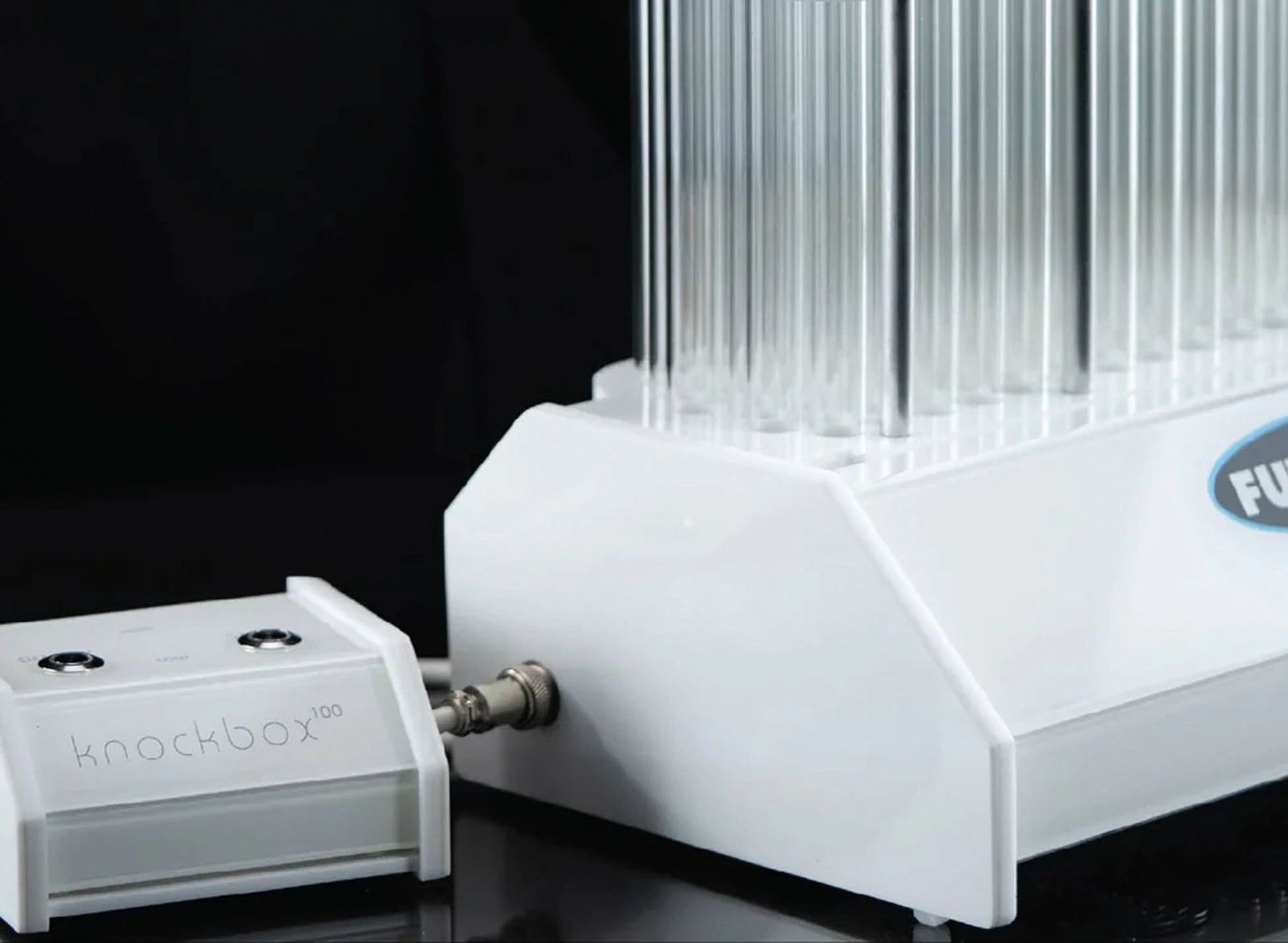
business tips
Everything You Need to Know About Futurola Pre-Rolled and Rolling Machines
Table of Contents
Introduction to Futurola: Innovation in Pre-Roll Technology
Futurola Pre-Rolled Cones: Quality and Consistency
Futurola Rolling Machines: Models and Capabilities
The Futurola Knockbox
Futurola Shredder Technology
Comparing Futurola to Other Brands
Maximizing Efficiency with Futurola Equipment
Everything You Need to Know About Futurola Pre-Rolled and Rolling MachinesIn the rapidly evolving cannabis industry, efficiency and consistency in pre-roll production have become critical factors for businesses looking to scale. Futurola has emerged as a leading manufacturer of pre-rolled cones and automated rolling machines that deliver professional results. This comprehensive guide explores the complete Futurola ecosystem and how it can transform your pre-roll operations.Introduction to Futurola: Innovation in Pre-Roll TechnologyFuturola, a Dutch company with roots dating back to 1984, has built a reputation for creating innovative smoking accessories and production equipment. Their focus on automation, precision, and quality control has made them a preferred choice for both small operations and large-scale producers in the cannabis industry.The brand offers a complete ecosystem of products, from premium pre-rolled cones to industrial-grade rolling machines capable of producing hundreds of perfectly rolled products per hour. Futurola's innovative smoking accessories and tools are designed with both functionality and user experience in mind.Futurola Pre-Rolled Cones: Quality and ConsistencyFuturola pre-rolled cones are crafted from high-quality, unrefined papers that provide a clean, even burn. Available in various sizes and styles, these cones feature:
Unbleached, natural materials
Consistent shape and density
Various filter options
Multiple size configurations
The brand's attention to detail ensures that each Futurola pre roll maintains the same high standards. For businesses, this consistency translates to reliable products and satisfied customers. Futurola's range of blunt cones and pre-rolled options provides versatility for different consumer preferences.While exploring pre-rolled options, it's worth noting that many businesses also incorporate other premium products like our selection of RAW cones to offer customers variety in their pre-roll selections.Futurola pre-rolled cones are designed for both manual filling and compatibility with their automated filling machines, creating a seamless production ecosystem.Futurola Rolling Machines: Models and CapabilitiesThe cornerstone of Futurola's offering is their range of rolling machines designed for commercial production. These machines vary in capacity, automation level, and price point to accommodate different business needs.The Futurola KnockboxThe Futurola pre roll machine known as the Knockbox is the brand's flagship product. This semi-automated filling device can produce up to 100 perfectly packed pre-rolls in under two minutes. Key features include:
Adjustable density settings
Compatibility with multiple cone sizes
Simple cleaning and maintenance
Consistent packing pressure
The Knockbox represents a significant upgrade from manual filling methods, dramatically increasing production capacity while maintaining quality. For businesses scaling their pre-roll operations, this machine offers an excellent balance of efficiency and investment.Futurola Shredder TechnologyComplementing their rolling systems, Futurola shredders prepare material for optimal filling consistency. Available in standard and mini versions, these devices ensure:
Uniform particle size
Prevention of clogging in machines
Reduction of waste material
Improved burn quality in final products
The integration of proper grinding technology with Futurola rolling machines creates a complete production system that addresses every step of the pre-roll manufacturing process.Comparing Futurola to Other BrandsWhen evaluating Futurola against competitors, several distinctions become apparent:
Futurola vs. RAW: While RAW offers excellent manual rolling machines like the popular RAW roller and quality pre-rolls, Futurola focuses more on commercial-scale automation.
Production Capacity: Futurola machines typically offer higher volume capabilities compared to most competitors.
Investment Level: Futurola equipment represents a higher initial investment but offers significant labor savings for growing operations.
Size Options: While brands like RAW offer various roller sizes, Futurola machines are designed to work with multiple cone dimensions within the same device.
The choice between Futurola and other brands ultimately depends on production volume needs, budget constraints, and growth projections.Maximizing Efficiency with Futurola EquipmentTo get the most from your Futurola pre rolled and rolling machine investments, consider these best practices:
Implement regular cleaning and maintenance schedules
Train staff thoroughly on proper machine operation
Use the recommended grind consistency for your material
Store pre-rolled cones properly to maintain their shape
Track production metrics to optimize workflow
By creating standard operating procedures around your Futurola equipment, you can ensure consistent quality while maximizing production efficiency. Many businesses find that combining Futurola's automated solutions with Futurola cones creates the most streamlined operation.As pre-roll demand continues to grow across markets, investing in reliable, scalable production equipment like Futurola machines positions businesses for sustainable growth. Whether you're just starting or looking to expand existing operations, understanding the capabilities and limitations of these systems is essential for making informed investment decisions.

